Two identical wooden blocks (A and B) are kept as known in the figure. When you push the blocks, which of the blocks would experience less frictional force? State the reason.

Frictional force is indepandent of area of contact.
Topper's Solved these Questions
- BOOK - CENGAGE PHYSICSCHAPTER - FRICTIONEXERCISE - CONSOLIDATED EXERCISE.1videos
FRICTION
- BOOK - CENGAGE PHYSICSCHAPTER - FRICTIONEXERCISE - CONSOLIDATED EXERCISE. (MULTIPAL-CHOICE QUESTION WITH ONE OR MORE THAN ONE CORRECT ANSWER)3videos
FRICTION
- BOOK - CENGAGE PHYSICSCHAPTER - FRICTIONEXERCISE - OLYMPIAD AND NTSE LEVEL EXERCISES (Read the given statements and select the correct option.)1videos
FRICTION
- BOOK - CENGAGE PHYSICSCHAPTER - ELASTICITYEXERCISE - OLYMPIAD AND NTSE LEVEL EXERCISES10videos
ELASTICITY
- BOOK - CENGAGE PHYSICSCHAPTER - SOUNDEXERCISE - OLYMPIAD AND NTSE LEVEL EXERCISE10videos
SOUND
Similar Questions
A block is placed on a rough horizontal plane. Three horizontalforces are applied on the block as shown in the figure. If the block is in equilibrium, find the friction force acting on the block.
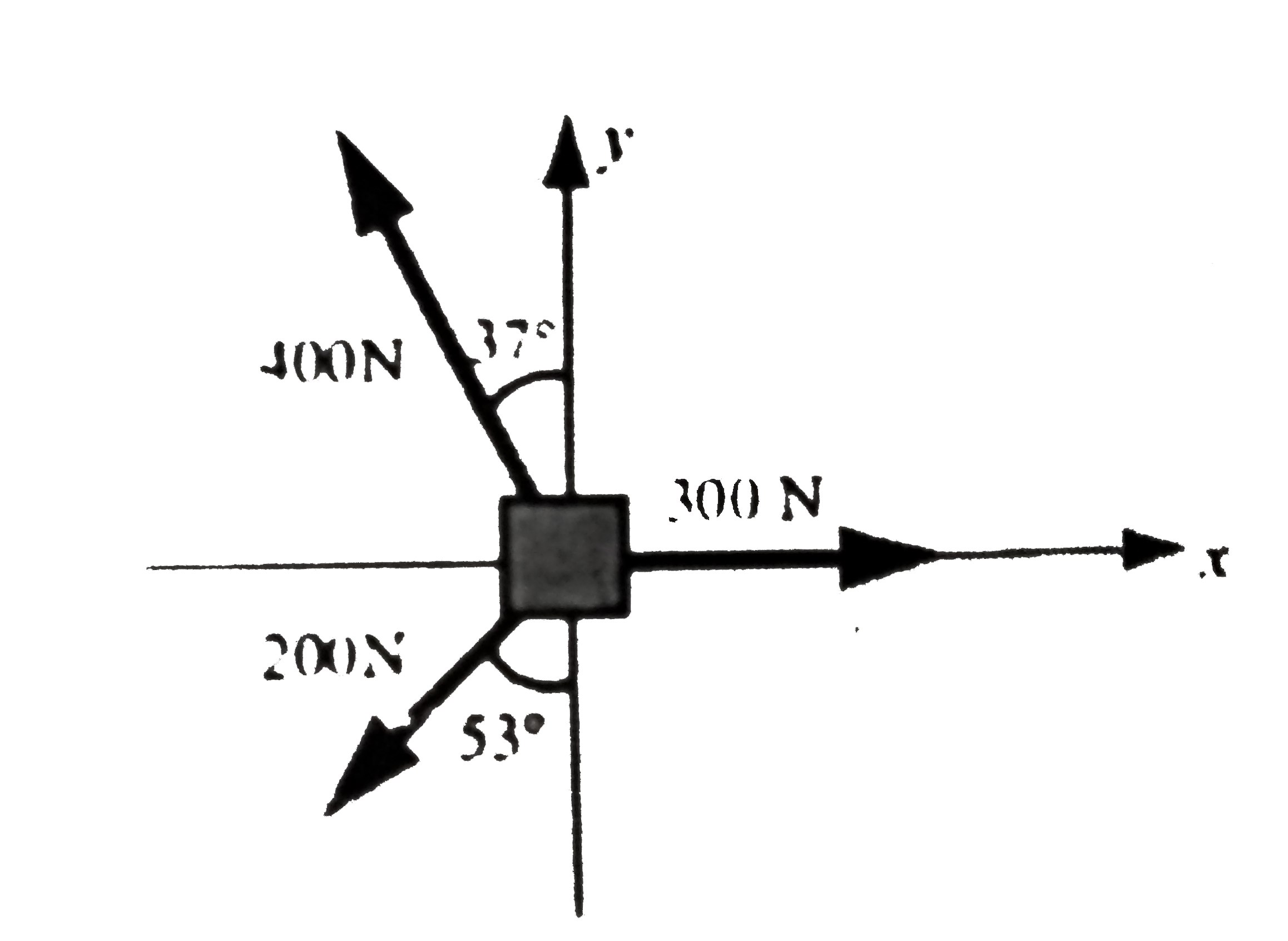 View Solution
View SolutionTwo blocks A and B are lying on the table as shown in the figure. The coefficient of friciton between block A and block B is μ. The coefficient of friction between block B and ground also μ. An external force F is applied in the direction shown. The maximum value of the force F that can be applied without moving the blocks.
 View Solution
View Solution
Knowledge Check
- Question 1 - Select One
As shown in the figure , the friction force acting on the block is
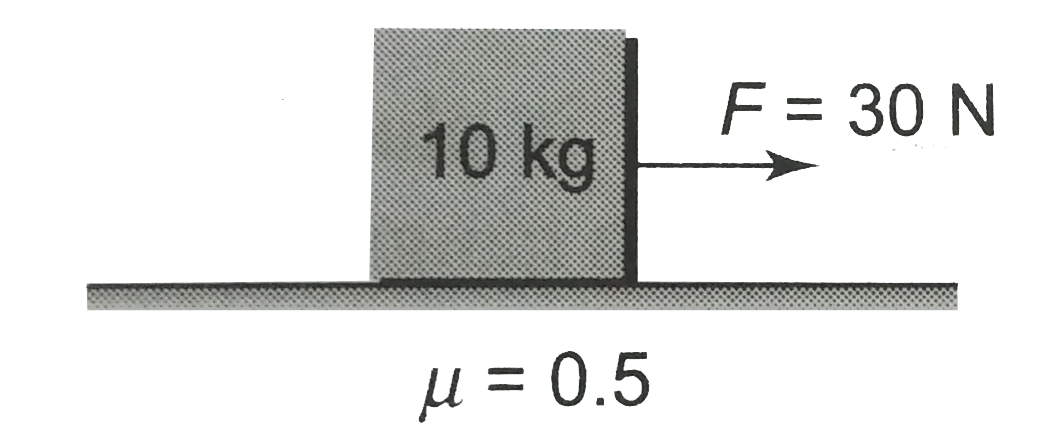 A50NB30NC20NDNone
A50NB30NC20NDNone - Question 2 - Select One
Two identical blocks of weigth w are placed one on top of the other as shown in figure. The upper block is tied to the wall. The coefficient of static friction between B and ground is μ and friction between A and B is absent. When F=μwforce is applied on the lower block as shown. The tension in the string will be
 AμwBμw2C0D2μw
AμwBμw2C0D2μw - Question 3 - Select One
A ball is placed between two wooden blocks as shown in the figure. The volume of the sphere is…………….
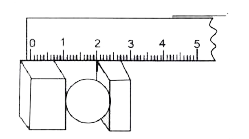 A6.54cm3B1.15cm3C2.14cm3D2.14cm3
A6.54cm3B1.15cm3C2.14cm3D2.14cm3
Two blocks of mass 10kg and 30kg are kept as shown in the figure. The surface between the block is fricitional while the ground is smooth. A horizontal force of magnitude 60N is applied horizontally on the upper block. Find the frictional force on block of mass 30kg ?
 View Solution
View Solution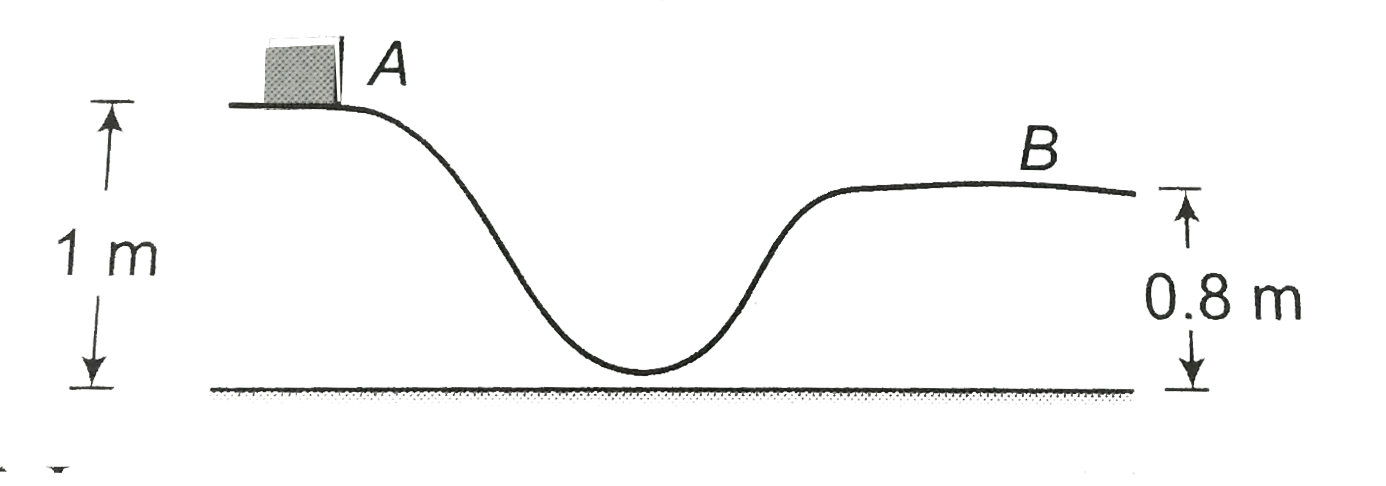
A block of mass 1 kg is placed at the point A of a rough track shown in the figure. If slightly pushed towards right, it stops at the point B of the track. The work done by the frictional force on the block during its transit from A to B isView SolutionTwo identical blocks, each having mass M, are placed as shown in figure. These two blocks A and B are smoothly conjugated, so that when another block C of mass m passes from A to B there is no jerk. All the surfaces are frictionless, and all three blocks are free to move. Block C is released from rest, then
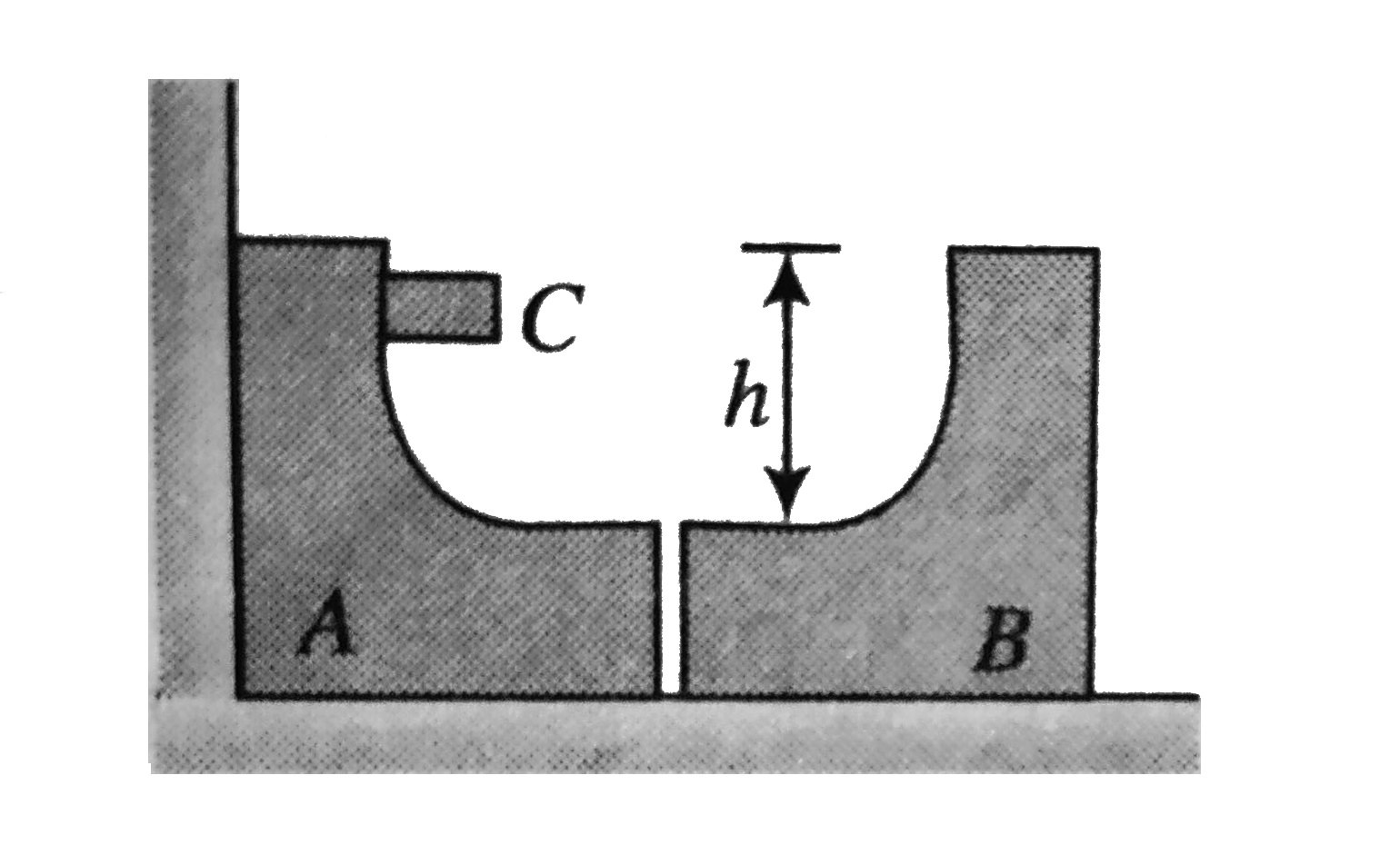 View Solution
View SolutionThe system of two blocks is at rest an shown in the figure. A variable Horizontal force is applied to the upper block. The maximum possible constant force exerted by the horizontal ground surface on the lower block is ( coefficient of friction for both the contracts is μ )
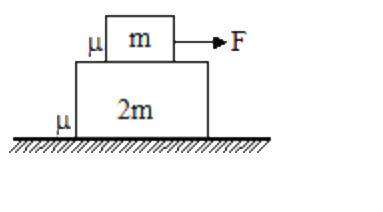 View Solution
View SolutionTwo block A and B are as shown in figure. The minimum horizantal force F applied to the block B for which slipping begins between B and ground is :
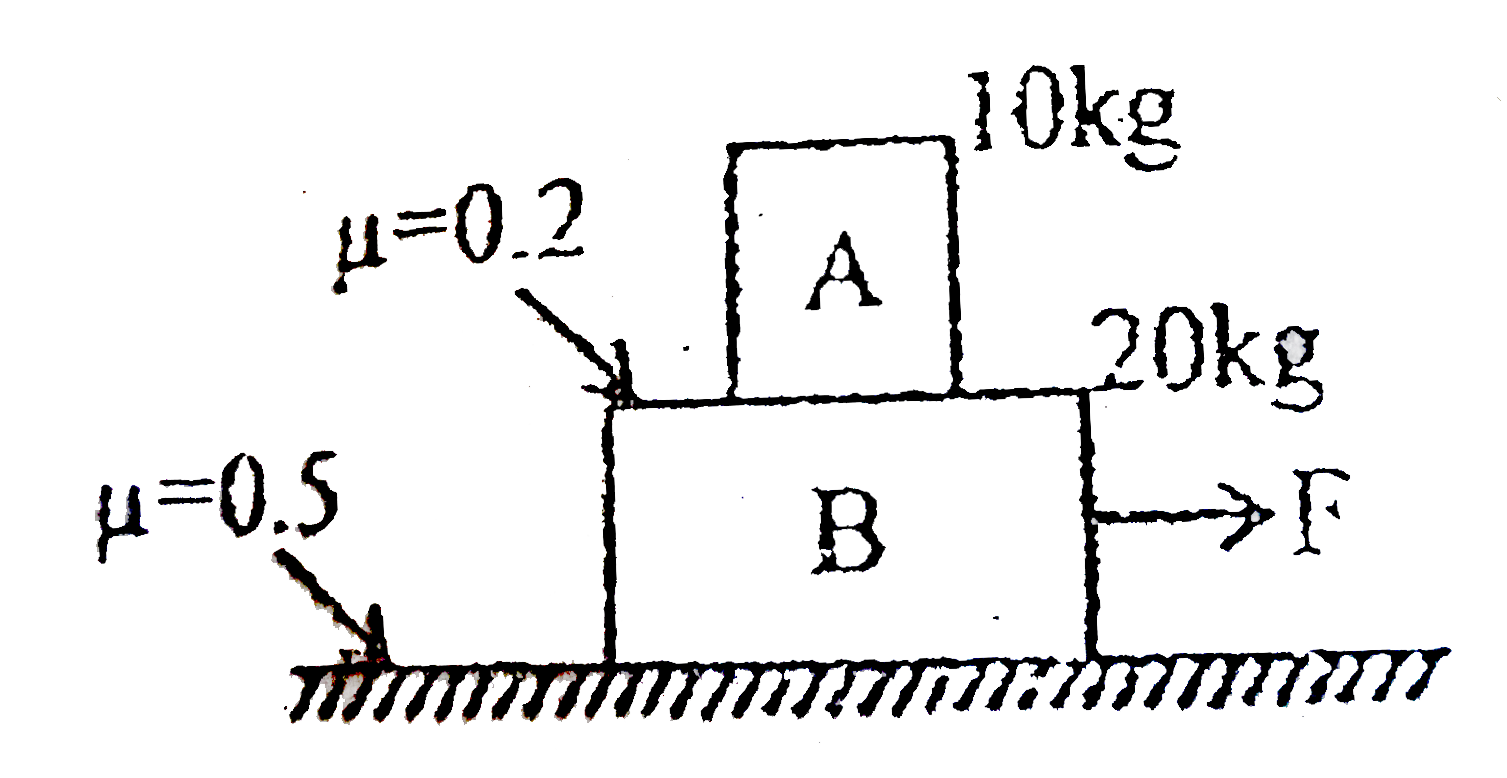 View Solution
View Solution

